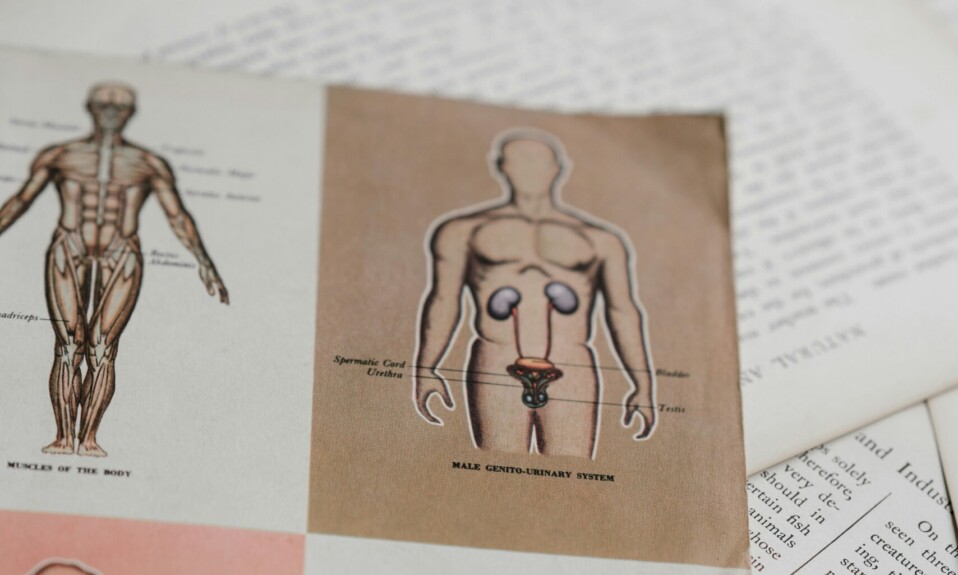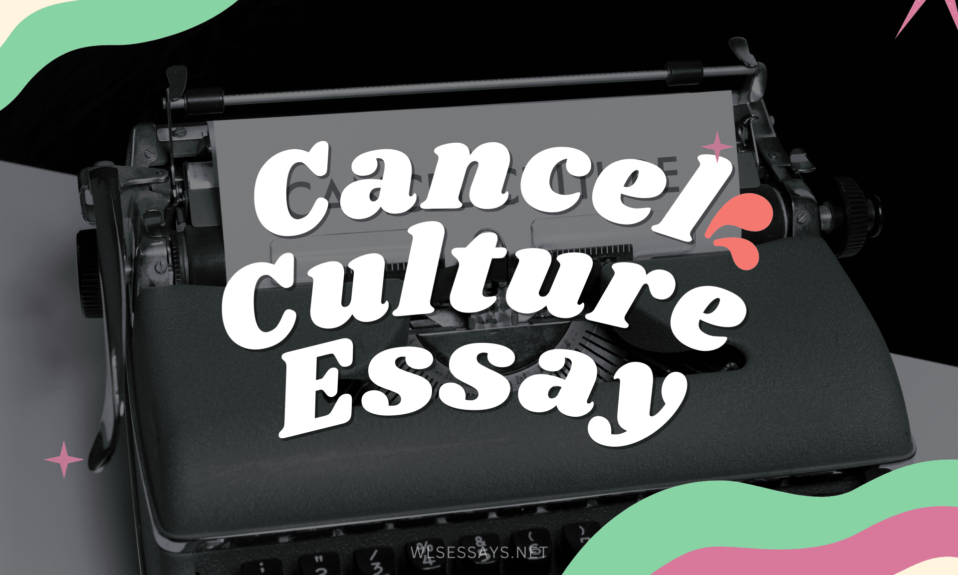Portfolio Introduction
This portfolio is divided into nine parts, each of which corresponds to the learning outcomes of the course: three concept parts, three skill parts, and three connection parts. The format enables me to showcase the achievement of the outcomes mentioned above by providing work samples produced throughout the semester. As a collection of assignments, projects, and assessments, this portfolio presents a broad spectrum of material that I have developed throughout the program in the fields of biology, human anatomy, and the use of scientific concepts in problem-solving. In the following pages, I will try to give an overview of my academic achievements and education, as well as demonstrate the growth of critical thinking and the acquisition of valuable skills necessary for a scientist.
The portfolio can be used as a reference to the knowledge and skills obtained throughout the course in such subjects as science, general biology, and human biology. It is essential for identifying the main ideas, practicing in experiments, developing data analysis skills, and understanding relations between different subjects. Through the demonstration of my academic projects, this portfolio not only reflects my current knowledge and expertise but also proves my passion, curiosity, and pursuit of knowledge, as well as my commitment to the development of the science field. The variety of the sources included also demonstrates the range of the subjects and fields I have read and the development of my expertise over the years. For every course module, the journal includes a record of at least two artifacts, including quiz answers, media pieces, or any other work I have done outside the course, as evidence of meeting and achieving the course outcomes as listed in the table below.
Course Concept/Modules: Media Pieces Completed to Achieve Objective
Science Concepts: | Disease literacy, the endocrine system, and the influence of different factors on physiological processes |
| Science Skills: | Experimental design for sleep study, data collection methods |
| Science Connections: | Distinguishing primary and secondary sources, guidance on scientific paper structure |
| General Biology Concepts: | Neuron structure illustration, brain lobe functions overview. |
| General Biology Skills: | Quantitative step count study, data analysis, and conclusion |
| General Biology Connections: | Life artifacts media |
| Human Biology Concepts: | Reproductive cancers overview, effects of binge drinking |
| Human Biology Skills: | Safety checklist, personal hedonic memory response |
| Human Biology Connections: | Body data plan, training certification (First Aid/CPR/AED) |
Looking ahead, this portfolio can help with any future academic or career-related projects. It forms a collection of assignments that reflect my knowledge of scientific concepts, analytical skills, and biological knowledge in practical contexts. Furthermore, the portfolio’s content and inclusiveness allow for use in different situations, such as when applying for a university or college, searching for a job in the sphere of science, carrying out personal research, or studying subjects that interest me as a scientist. Thus, this portfolio is not only an accurate representation of my current skills and achievements but also a starting point for my further professional advancement within the sphere of science.
Section 1: Science Concepts
This section is aimed at proving that I possess adequate knowledge of fundamental scientific concepts. The goals of the included work are focused on disease literacy, the endocrine system, and the influence of different factors on physiological processes. Through this section, I demonstrate my understanding of these core scientific concepts, which form the basis of the subsequent analysis of biological processes and their functioning, thus establishing my capacity to study and apply scientific concepts in various fields. The examples given in this paper are proof of my extensive and profound comprehension of the concepts in the scientific world, which demonstrate my ability to analyze and explain complex ideas in a comprehensive and systematic approach.
This brief proves my understanding of various reproductive cancers, their location, ways of detection, and general treatment. The amount of material covered in this overview not only proves my awareness of particular diseases but also shows my ability to systematize and present information on various diseases understandably and coherently. Explaining the specifics of these diseases, I provide a clear example of my understanding and ability to explain the details of biological processes and their relation to human health, as well as my command of the scientific knowledge pertaining to diseases and pathology.
This work proves my understanding of the endocrine system, endocrine glands, and hormones and how they control such processes as blood calcium and glucose. It also includes the impacts of stress hormones such as adrenaline and cortisol (Reiske et al., 2022) on the body, not to mention factors that affect metabolism. This particular example demonstrates how I can analyze the detailed mechanisms of the endocrine system, thus highlighting my capacity to understand biological processes and their interactions with other factors that make up the human body and its functions. Moreover, the extent of knowledge demonstrated in this overview proves my ability to synthesize and explain a wide range of concepts concerning the human body, from anatomical elements to hormones and metabolism, which proves my versatility and profound knowledge in the sphere.
Section 2: General Biology Concepts
H
This illustration shows the major parts of a neuron, which includes the dendrites, axons, myelin sheaths, and synapses (Pliakopanou, 2023). It proves my knowledge of the essential elements of the nervous system and their function to transfer and perceive stimuli. This illustration of the neurons’ structure not only proves that I am familiar with the specific details of the human body but also demonstrates my understanding of how to convey biological information understandably. The level of detail and sharpness of this illustration demonstrates my adherence to the principles in the study of biology and my ability to apply the concept in different platforms, such as illustration. ere, I provide examples of neuron structure, brain function, and perception to demonstrate my understanding of general biology concepts. These concepts are rather basic but essential in the further study and use of biological information; thus, this section is proof of the comprehensiveness of my knowledge of general biology. Thus, by proving that I am capable of effectively applying these simple concepts, I create a foundation on which more complex and specific knowledge can be built, thereby indicating my readiness to deal with more complicated biological processes.
This overview shows how the cerebral cortex’s lobes work: the frontal lobe for decisions, the parietal for sensory information, the occipital for vision, and the temporal for memory and hearing(Chaddad-Neto, F., & Silva da Costa, 2022). It proves my understanding of the structure of the brain and the functions that are performed by the different parts of the brain. In this way, the format of the information provided in this example illustrates my ability to generalize and structure information, as well as my understanding of general biology. This is evident in the concise and coherent format of the present overview: it proves my capacity to break down complex data into its core message, a skill that is paramount in the realm of science and knowledge transfer.
Brain lobe functions
Section 3: Human Biology Concepts
This section contains samples to illustrate my understanding of the different aspects of human biology, particularly regarding reproductive cancer, the effects of binge drinking, and physiological changes. In exploring these topics, I show how the subject matter I have learned in the sciences is relevant to the study of human health and welfare and how it can be used to address issues that affect people’s lives. The examples mentioned in this section are diverse, which indicates that I am capable of using biological knowledge in a broad spectrum of situations, thus proving my ability to solve complex problems in the sphere of human biology.
Reproductive cancers Overview
Example 1: O
Reproductive Cancers verview
[Insert reproductive cancers overview from PDF]
The above overview proves my knowledge of the existing types of reproductive cancers, such as cervical, ovarian, prostate, and testicular cancers. It outlines the areas of the body where they occur, how they are diagnosed, and the general management and treatment of the diseases, demonstrating my understanding of these diseases. This example illustrates not only my knowledge of human biology concepts but also my capability to present a vast amount of information on reproductive cancers in a transparent manner, which is an essential aspect of future work in healthcare or scientific journalism. The amount and range of knowledge presented in this overview prove my desire to gain a deeper and more detailed understanding of biological processes, as well as my efforts to improve my skills in conveying information in easily understandable and applicable ways.
This work shows my understanding of the effects of excessive alcohol consumption on the respiratory system, kidney, and liver, respectively. It shows my knowledge of how alcohol impacts the lungs, kidneys, and liver and the outcomes of alcohol abuse. This example demonstrates my capacity to evaluate and synthesize complicated biological processes and their relationships to substance abuse and the human body. The vast and diverse nature of this overview illustrates my ability to consolidate information from different fields and integrate the findings to create a broad understanding of the biological consequences of lifestyles and environments.
Effects of Binge Drinking
Section 4: Science Skills
In this section, I have provided samples that demonstrate my ability to apply science skills such as designing experiments, data collection techniques, and analysis. These skills are essential to the scientific method and are vital to the conduct of proper and relevant research; the section is, therefore, evidence of my scientific knowledge and ability to make use of science in carrying out research. Thus, by presenting my proficiency in these core competencies, I confirm my ability to engage in independent research and contribute to the growth of knowledge in the domain.
Experimental Design for Sleep Study
The above experimental design proposes research that seeks to establish the impact of sleep on the mood and productivity of college learners. This aspect shows my skill in developing a proper experiment design, clearly identifying variables, correctly stating hypotheses, and making the appropriate choice of procedures in order to collect and analyze the data. Due to the fact that this paper provides a coherent and step-by-step approach to scientific research, this example testifies to my capability to think critically, solve problems, and undertake a systematic approach to investigate various occurrences. The extent of control embraced under the strategies of this experimental design demonstrates my ethos as a severe and aspiring scientist who wants to get nothing but accurate and reliable data to make valid conclusions that will be a valuable addition to the existing knowledge base.
This section describes the data collection strategies under development for the sleep study, and they include the sleep trackers, sleep diary, and mood questionnaire. It demonstrates my ability to apply both statistical and non-statistical methods of data collection in order to collect as much extensive information as possible as well as to obtain a broad picture of the research issue. This example demonstrates the ways in which I am able to apply systematic and organized ways of thinking about scientific inquiries, collecting data in multiple ways, and coming up with quantifiable and reliable results. This approach of paying attention to specifics of using the most appropriate data collection methods and techniques reveals my understanding of the particularities inherent in the scientific work and my concern for these aspects, which would contribute to the overall improvement of the research process and the results of this activity.
Data Collection Methods
Section 5: General Biology Skills
This section is devoted to the illustration of skills in the field of general biology, with references to quantitative study design, data analysis, and conclusions based on empirical evidence. This section allows me to demonstrate my mastery of these basic skills that are fundamental to the study of biology, as well as my capacity to use the scientific approach to solve problems and expand existing knowledge in the field. The cases mentioned above are indicative of my ability to handle a broad spectrum of research issues, thus emphasizing my readiness to participate in meaningful scientific investigation in a variety of fields within the biological sciences.
This study seeks to examine the effects of walking on three types of surfaces, asphalt, grass, and treadmill, on the daily step count. It demonstrates my capacity to develop and implement quantitative research, gather data systematically with relevant tools (e.g., Apple Health app), and analyze the results in terms of different variables. This example illustrates the basic and advanced skills in research through a well-designed and satisfactory execution of the study, including the concepts of experiments, data collection, and analysis, which are very important and valuable when conducting research in the biological sciences. The emphasis made on the ways and the scrupulous planning of this work is evidence of my compliance with the principles of scientific approach, the purpose of which is to deliver relevant, ‘truthful’, and valuable information.
Quantitative Step Count Study
This section contains the findings and recommendations based on the step count research. It shows how I was able to calculate the averages and the variances and how I was able to analyze the results to come up with conclusions about the variability and efficiency of the various walking surfaces for physical activity. This example demonstrates my capacity to analyze data and make logical conclusions based on the given information, which is a critical component of scientific research – data synthesis and reporting. The organization of the analysis and findings in this section demonstrates my adherence to the principles of scientific writing that allow the results of the investigations to be communicated to the academic community and the general public in an understandable and meaningful manner.
Data Analysis and Conclusion
Section 6: The following are the human biology skills:
Here, I present examples that can evidence my competencies in the human biology area, namely creating safety measures, performing sensory activities, and evaluating the results of individual data. These examples also not only show different practices and skills I have acquired during my studies but also point out how I have used biological concepts and methods in practice and real-life situations. This section demonstrates my versatility and readiness to solve various tasks in the field of human biology by showcasing a variety of relevant skills.
This checklist covers all the safety measures that one is supposed to observe in different situations and shows how I would be able to evaluate the other aspects of safety in various circumstances. Some of them include risk evaluation, safeguarding co-workers and the community, putting measures into practice, handling emergencies, using relevant personal protective equipment, and being ready for new risks. The degree of elaboration and comprehensiveness of this checklist is a testimony to the fact that I understand the significance of safety in scientific activities, especially those that involve people and or hazardous substances. Thus, by providing examples of my ability to create and follow the safety procedures, I prove that I will not compromise the subjects’ and participants’ safety and will stay ethical throughout the research process.
This section presents an outline of a sensory experiment that includes an assessment of personal hedonic ratings and memory response to unknown smells. It proves my abilities in designing and performing sensory experiments, as well as in interpreting and analyzing subjective information concerning the perceptual and memorial experiences of human individuals. The novelty of this experiment demonstrates my potential for creative thinking and problem-solving, especially in the field of biology and the mechanisms of the human senses and cognition. In providing this example, I demonstrate my familiarity with a variety of experimental approaches, which further reflects my readiness to meet a variety of research problems within the domain of human biology.
Personal Hedonic Memory Response
Section 7: Science Connections
This section is aimed at demonstrating my capacity to draw connections between ideas in science, information resources, and practical uses. Through these connections, I am able to prove my ability to integrate information from different fields and apply it in solving real-life problems as well as in the enhancement of the body of knowledge. The examples discussed in this section prove my critical thinking, analytical skills, and presentation skills that are vital in scientific fields.
The work below aims at showcasing my comprehension of the distinctions between primary and secondary information sources in the scientific realm. It explains the strengths and proper application of each source type and shows the ability to analyze and apply different information sources scientifically. Thus, I am able to demonstrate my ability to identify and use various forms of scientific sources, therefore emphasizing my dedication to the principles of scholarly research. This example also covers my critical analysis of the nature and quality of the information, distinguishing between the abundance of information in the scientific world and identifying sources of information that are credible and reliable.
Distinguishing Primary and Secondary Sources
This section offers tips on the analysis of the structure and the function of different sections in a scientific paper (for example, abstract, introduction, results, and discussion). It proves that I can understand and work with primary scientific literature, which is essential when making connections between research and practice
Scientific paper structure
Section 8: General Biology Connections
I
This media piece below consists of personal belongings and pictures that illustrate the physical and developmental transitions from puberty to adulthood. It demonstrates how I am able to relate biology, including growth and development, to the real world. With this intensely subjective example, I am able to show the committee that I can apply the theoretical concepts of scientific knowledge to the authentic experience of being alive. This kind of connection between theory and practice is highly beneficial in the field of biology because it makes the understanding of how biological processes work in reality more efficient and helps to create new, relevant, and meaningful research activities.
Life Artifacts Media
n this part of my self-reflective essay, I provide specific instances that show how I can connect course concepts to one’s own life or larger realities. By creating these connections, I emphasize my ability to bring scientific principles to practice and learn valuable lessons from various forms of data. This section will be a helpful demonstration of my skills in problem-solving, integrating knowledge from different fields, and presenting concepts and information that will be understandable and influential to a diverse audience.
Section 9: Human Biology Connections
In this section, I demonstrate how I am able to relate concepts acquired in human biology to everyday use, my own experiences, and the world at large. Thus, with the help of these connections, I am able to show how the concepts I understand and the knowledge I possess in the sphere of human biology can be applied in practice and how they may be helpful in solving real-life problems. The examples provided here are evidence of my dedication to using scientific knowledge in order to solve practical problems and work towards the improvement of people’s quality of life.
Body Plan Form
From above body data plan, there is a clear plan on how the individual will measure their sleep patterns and steps per day using technology and self-reporting. I consider it to be the perfect opportunity to show my capacity to correlate such aspects of human biology as sleep quality and level of physical activity with the achievement of personal goals and further use of data analysis to create suitable strategies. In this example, I demonstrate how my existing theoretical understanding of Social Psychology enables me to apply scientific concepts concretely and how recommended theories can guide one’s actions and plans in order to enhance the subject’s quality of life. Besides, this example is a testimony to my comprehension of the significance of quantification and the utilization of evidence in the area of human biology, thus the dedication to an organized and systematic pursuit of superior health for humans.
This part of the portfolio includes my certification in Adult and Pediatric First Aid/CPR/AED obtained at the American Red Cross. They evidence my skill in relating what a human biology student learns in class to field-related practical skills that can save people’s lives and also the significance of volunteering and people’s welfare. The certification is my assurance of the implementation of biological knowledge in actual practice and valuable contribution to society. Thus, stressing this result, I show that I realize the extent of the essence of science and my willingness to apply this knowledge to help other people. This example served to demonstrate my capacity to effectively use the knowledge I have acquired through the theoretical study of biology and practical skills that may positively impact people’s lives and change their communities.
Training Certification
By highlighting the various examples included across these nine sections, this portfolio provides a clear demonstration of the course outcomes I have achieved. It sums up the scientific and general biology and human biology knowledge, as well as the skills and understanding of how theory can be applied in this area of study. Furthermore, the portfolio demonstrates my passion for applying scientific knowledge to solve existing problems, improve the quality of human life, and enhance people’s understanding of the complexity of the world. In my future academic and professional activities, this portfolio will help to prove my readiness, adaptability, and commitment to fulfilling the tasks of a scientist and professional, adhering to the highest ethical standards.
References
Reiske, L., Schmucker, S., Pfaffinger, B., Weiler, U., Steuber, J., & Stefanski, V. (2020). Intravenous infusion of cortisol, adrenaline, or noradrenaline alters porcine immune cell numbers and promotes innate over adaptive immune functionality. The Journal of Immunology, 204(12), 3205-3216.
Chaddad-Neto, F., & Silva da Costa, M. D. (2022). Surgical Anatomy of the Parietal and Occipital Lobes. In Microneuroanatomy and Surgery: A Practical Anatomical Guide (pp. 37-53). Cham: Springer International Publishing.
Pliakopanou, A. (2023, December 21). Parts of a neuron. Kenhub. https://www.kenhub.com/en/library/anatomy/parts-of-a-neuron









